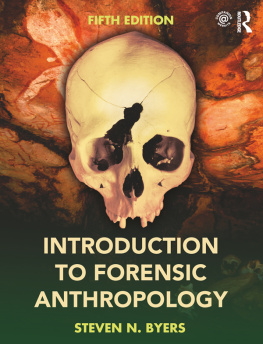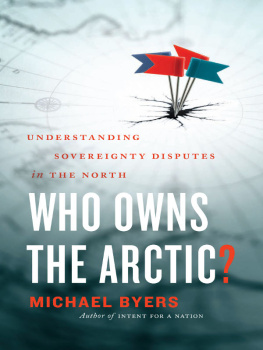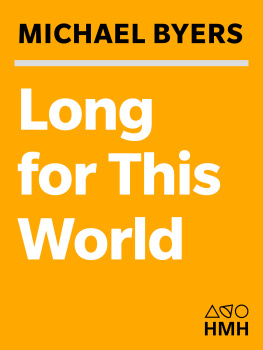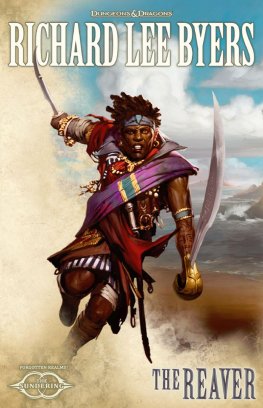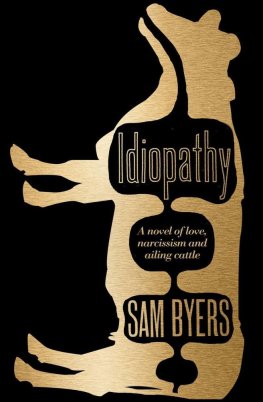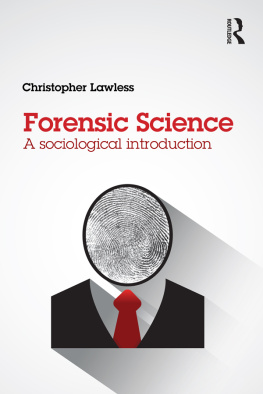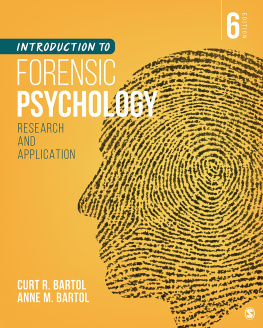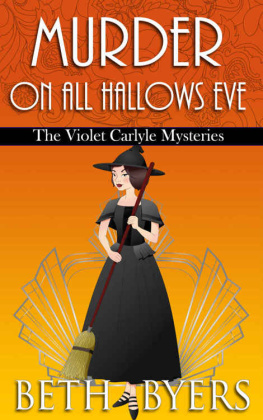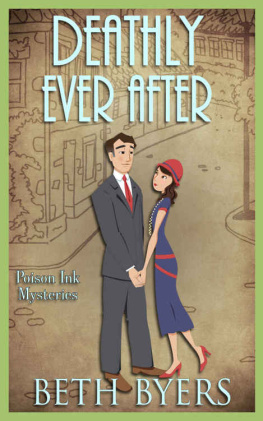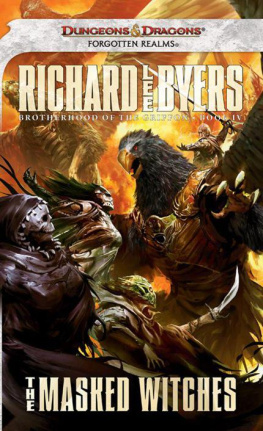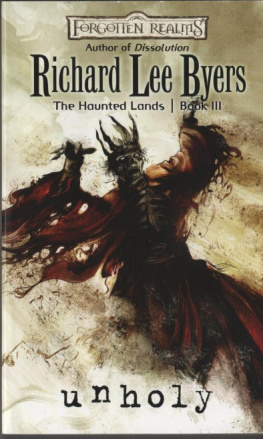Byers - Introduction to Forensic Anthropology
Here you can read online Byers - Introduction to Forensic Anthropology full text of the book (entire story) in english for free. Download pdf and epub, get meaning, cover and reviews about this ebook. publisher: Routledge, genre: Romance novel. Description of the work, (preface) as well as reviews are available. Best literature library LitArk.com created for fans of good reading and offers a wide selection of genres:
Romance novel
Science fiction
Adventure
Detective
Science
History
Home and family
Prose
Art
Politics
Computer
Non-fiction
Religion
Business
Children
Humor
Choose a favorite category and find really read worthwhile books. Enjoy immersion in the world of imagination, feel the emotions of the characters or learn something new for yourself, make an fascinating discovery.
- Book:Introduction to Forensic Anthropology
- Author:
- Publisher:Routledge
- Genre:
- Rating:5 / 5
- Favourites:Add to favourites
- Your mark:
- 100
- 1
- 2
- 3
- 4
- 5
Introduction to Forensic Anthropology: summary, description and annotation
We offer to read an annotation, description, summary or preface (depends on what the author of the book "Introduction to Forensic Anthropology" wrote himself). If you haven't found the necessary information about the book — write in the comments, we will try to find it.
Introduction to Forensic Anthropology — read online for free the complete book (whole text) full work
Below is the text of the book, divided by pages. System saving the place of the last page read, allows you to conveniently read the book "Introduction to Forensic Anthropology" online for free, without having to search again every time where you left off. Put a bookmark, and you can go to the page where you finished reading at any time.
Font size:
Interval:
Bookmark:

Anthropology
This book provides comprehensive coverage of the methods and issues in the current practice of forensic anthropology. It introduces students to all the major topics in the field, with material ranging from the attribution of ancestry and sex, to various forms of bone trauma, to identification through radiography.
Introduction to Forensic Anthropology uses the terminology and best practices recommended by the Scientific Working Group for Forensic Anthropology (Swganth). The fifth edition has been fully updated in light of recent developments, incorporating new and improved methods as well as fresh data. The section on human osteology and odontology in particular has been expanded.
This accessible and engaging text offers an array of features to support teaching and learning, including:
boxed case studies
extensive figures and photographs
chapter summaries and student exercises
a glossary of terms
further resources via a companion website.
Steven N. Byers has a Ph.D. in Anthropology from the University of New Mexico (UNM), USA. Now retired, he worked for a number of years on various campuses of UNM, teaching courses in Forensic Anthropology, Biological Anthropology, and Archaeology. He is currently serving on the Anthropology Consensus Body of the American Academy of Forensic Sciences Standards Board, in addition to focusing on Southeastern United States bioarchaeology. Byers publications with Routledge also include this titles sister volume, Forensic Anthropology Lab Manual (in its 4th edition).
Anthropology
Fifth Edition
Steven N. Byers

Fifth edition published 2017
by Routledge
2 Park Square, Milton Park, Abingdon, Oxon OX14 4RN
and by Routledge
711 Third Avenue, New York, NY 10017
Routledge is an imprint of the Taylor & Francis Group, an informa business
2017 Steven N. Byers
The right of Steven N. Byers to be identified as author of this work has been asserted by him in accordance with sections 77 and 78 of the Copyright, Designs and Patents Act 1988.
All rights reserved. No part of this book may be reprinted or reproduced or utilised in any form or by any electronic, mechanical, or other means, now known or hereafter invented, including photocopying and recording, or in any information storage or retrieval system, without permission in writing from the publishers.
Trademark notice: Product or corporate names may be trademarks or registered trademarks, and are used only for identification and explanation without intent to infringe.
Previously published by Pearson Education, Inc. 2002, 2005, 2008, 2011
British Library Cataloguing-in-Publication Data
A catalogue record for this book is available from the British Library
Library of Congress Cataloging-in-Publication Data
Names: Byers, Steven N., author.
Title: Introduction to forensic anthropology / Steven N. Byers.
Description: Fifth edition. | Milton Park, Abingdon, Oxon ; New York, NY :
Routledge, 2016.
Identifiers: LCCN 2015049547 | ISBN 9781138188846 (hardback : alk. paper) |
ISBN 9781315642031 (ebook)
Subjects: LCSH: Forensic anthropology,
Classification: LCC GN69.8 .B94 2016 | DDC 599.9dc23
LC record available at http://lccn.loc.gov/2015049547
ISBN: 978-1-138-18884-6 (hbk)
ISBN: 978-1-315-64203-1 (ebk)
Typeset in Sabon
by Keystroke, Station Road, Codsall, Wolverhampton
Visit the companion website: www.routledge.com/cw/byers
To Michael Charney, an anthropologist of the old school
and forensic anthropologist par excellence
by Stanley Rhine
Just as forensic anthropology is clearly too critical to be left to amateurs, so is the business of writing forewords. However, I will try, as few foreword writers can claim to have known their subject for as many years as I have known Steven Byers. He arrived at the University of New Mexico in 1983, ready to launch his Ph.D. work. But I had met him some years earlier, as an undergraduate.
You might expect Byers to have been an enthusiastic follower of matters forensic. But he was not. He pursued his own quiet path, winding through thickets of forensic anthropology students busily boiling down bones, examining gunshot wounds, and gathering to talk in hushed tones about the latest case. Byers shied away from such applied matters to concentrate on the osteology of extinct peoples rather than extant ones. However, it was impossible for him to avoid forensic anthropology entirely, and he became a participant in a number of research projects that had application to prehistoric osteology as well as to forensic anthropology.
Eventually he, too, succumbed to the siren call of forensic anthropology, and found himself teaching such courses at the undergraduate level. He quickly realized that forensic anthropology cannot simply be learned from a text and put immediately into practice. Long-term commitment and guided study are essential. He also learned that this burgeoning field had no real textbook and set about to remedy that defect. Over the next couple of years, our frequent lunch-time discussions centered evermore on the details of forensic anthropology as he worked his way through the intricacies of osteological analysis in a medicolegal context. Eventually he began to hand me bits and pieces, then entire chapters of what has now become the book that you, the reader, hold in your hands.
Forensic anthropology is a serious field of endeavor; it is much more than merely applied osteology. It requires comprehension of the limits of ones knowledge. It requires keeping interpretations within the boundaries of the data. It requires recognition that to mishandle data could imperil another persons life or freedom. The forensic anthropologist must live by the realization that to venture beyond those bounds could not only harm his or her reputation and by extension, tarnish the field, but, more important, could put another person into unwarranted jeopardy.
The world of forensic medicine is divided into a large number of specialties, each of which adds its own particular insights and understandings to the resolution of a case. The forensic anthropologist sees only a small part of the total caseload. However, some of those cases may involve the forensic anthropologist not only in recovery and examination of remains and the writing of a detailed report, but testimony in court. That is what makes forensic anthropology forensic. For every case carries with it the potential of courtroom testimony as an expert witness, whose duty it is to provide the jury another piece or two of the puzzle to fit into place. With that duty comes the requirement to say only what can be said, to say it succinctly, clearly, and unambiguously. The ultimate decision belongs to the jury. But it is the forensic anthropologists obligation to provide them the data and interpretation that will help to illuminate the matter before them.
Not everyone who reads this book, or even those who also take additional coursework in forensic anthropology at one of those few institutions offering such training, will become a forensic anthropologist. And a good thing it is, since the work tends to be sporadic, difficult to find, and derided by colleagues who claim to be doing real science. But it is rewarding in other ways. In a sense, forensic anthropology is to the rest of anthropology as nuclear physics is to theoretical physics: It is committed to interdigitation with the real world.
Font size:
Interval:
Bookmark:
Similar books «Introduction to Forensic Anthropology»
Look at similar books to Introduction to Forensic Anthropology. We have selected literature similar in name and meaning in the hope of providing readers with more options to find new, interesting, not yet read works.
Discussion, reviews of the book Introduction to Forensic Anthropology and just readers' own opinions. Leave your comments, write what you think about the work, its meaning or the main characters. Specify what exactly you liked and what you didn't like, and why you think so.

